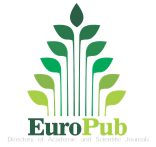Physiotherapy Intervention for Soft tissue Contracture and Joint Stiffness followed by BURN: A Case Report
Keywords:
Burn, Physiotherapy, Case report, Conservative managementAbstract
Burns or thermal injuries are life-threatening conditions that lead to death. Flame burn is more common and has an increasing mortality rate. Worldwide, burn injuries are ranked fourth in leading causes of death. The aim of the study is to represent the case report of burn, complications of burn, and the role of physiotherapy for soft tissue contracture and joint stiffness following burn in different stages. In this study, we found that a teenage girl was affected by a burn from the kitchen. She came for physiotherapy treatment at a sub-acute stage. She has scars in different areas and decreased ROM in different joints. Initially, we diagnosed her as having soft tissue contracture and joint stiffness from a physiotherapy point of view. We managed her with proper education of hygiene, respiratory physiotherapy, friction massage, stretching exercises, ROM exercises, and positioning of extremities. Recent literature also suggests that positioning is very important to preventing scars. Also, aerobic exercise and resistance training have been applied in chronic burn management. There is a lack of scope for physiotherapists in the acute stage of burn management. So, a serious complication developed in the post-burn. Therefore, physiotherapy intervention is effective from the beginning of burn injury to rehabilitation.
References
Peck MD. Epidemiology of burns throughout the world. Part I: Distribution and risk factors. Burns. 2011 Nov 1;37(7):1087-100.
Mashreky SR, Rahman A, Svanström L, Khan TF, Rahman F. Burn mortality in Bangladesh: findings of national health and injury survey. Injury. 2011 May 1;42(5):507-10.
He S, Alonge O, Agrawal P, Sharmin S, Islam I, Mashreky SR, Arifeen SE. Epidemiology of burns in rural Bangladesh: An update. International journal of environmental research and public health. 2017 Apr;14(4):381.
Mashreky SR, Rahman A, Khan TF, Svanström L, Rahman F. Determinants of childhood burns in rural Bangladesh: A nested case–control study. Health policy. 2010 Aug 1;96(3):226-30.
Park E, Oh H, Kim T. The effects of relaxation breathing on procedural pain and anxiety during burn care. Burns. 2013 Sep 1;39(6):1101-6.
Disseldorp LM, Nieuwenhuis MK, Van Baar ME, Mouton LJ. Physical fitness in people after burn injury: a systematic review. Archives of physical medicine and rehabilitation. 2011 Sep 1;92(9):1501-10.
Cho YS, Jeon JH, Hong A, Yang HT, Yim H, Cho YS, Kim DH, Hur J, Kim JH, Chun W, Lee BC. The effect of burn rehabilitation massage therapy on hypertrophic scar after burn: a randomized controlled trial. Burns. 2014 Dec 1;40(8):1513-20.
Morien A, Garrison D, Smith NK. Range of motion improves after massage in children with burns: a pilot study. Journal of bodywork and movement therapies. 2008 Jan 1;12(1):67-71.
Karimi H, Mobayen M, Alijanpour A. Management of hypertrophic burn scar: a comparison between the efficacy of exercise-physiotherapy and pressure garment-silicone on hypertrophic scar. Asian journal of sports medicine. 2013 Mar;4(1):70.











